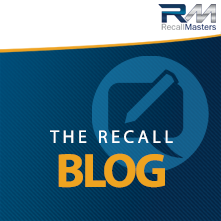When Batman Decides a Recall Isn’t Enough
When Batman Decides a Recall Isn’t Enough
In 2014, due to safety concerns, Toyota issued a recall notice for a power inverter on its popular Toyota Prius. Nothing abnormal. But for the fact that, even after the recall was fixed, customers continued coming in with issues – hundreds of them – and that’s when Roger Hogan’s dealership decided enough was enough. According to an article on thedrive.com, he chose to voluntarily discontinue selling these models which resulted in an estimated $1 million worth of inventory parked on the lot. Roger was unwilling to sell these vehicles because he didn’t believe the recall fix would, in fact, make them safe for his customers.
Toyota responded, stating that the recall fix “lessens the likelihood of failure,” which simply wasn’t good enough for Hogan. He is adamant about keeping his customer’s safe. He voluntarily stopped selling these vehicles and, subsequently, filed a $100 million lawsuit against Toyota, claiming that the manufacturer failed to fix the problem. He also reached out to the National Highway Traffic Safety Administration (NHTSA).
Hogan’s actions could be viewed as admirable in an industry that cannot afford to “sit on inventory.” Hogan decided to do what he believes is the right thing by refusing to put his customer’s lives in jeopardy; risking a significant financial loss by sitting on inventory. The exact action no dealer ever wants to take. Yet, he did it voluntarily. Why?
According to Mr. Hogan, “A recall is supposed to prevent the incident from happening. It’s not supposed to be you fix it after you’ve experienced the horrific event, you’re supposed to prevent that event from ever occurring… Why should you be allowed to put someone’s life in danger?”
In this case, the dealer saw that the recall repair was NOT solving the problem and, rather than continuing to sell the vehicles, shelved them in the best interest of the consumer. Recalls are a multi-level problem involving the OEM, consumers, dealers and government agencies. Most cannot be simply solved just by a manufacturer issuing a fix. In a perfect world, that would be great. But, just like in our government, there is a checks and balances system that involves the manufacturers, dealers and, ultimately, the affected consumers. I am not suggesting that this is a solution for every dealer, I am just highlighting an interesting occurrence in our recall world, one that we can all perhaps learn from.
It’s clear that Hogan made a decision which he believed placed customer safety as a priority. For that stance, it’s hard to be critical. In fact, he has my respect. He refused to sell vehicles that he feels are unsafe, despite completing the required recall repair. The ultimate goal should be to ensure all vehicles consumers drive are safe for the sake of the vehicle owners and other drivers on the roads. Did he do the right thing? The lawsuit will reveal whether Hogan went too far or if Toyota didn’t go far enough. Very interesting happenings going on.
For many consumer watchdog groups and dealers Hogan’s actions make him a figure of lore – a David among Goliaths, a superhero among Gotham’s villains. And, sometimes, we need a Batman to stand up to the powers that be to make that happen.

